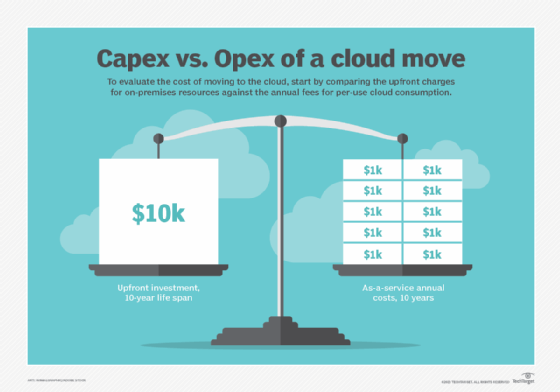
Getty Images/iStockphoto
5 KPIs to measure the success of a cloud-first strategy
So, you've adopted a cloud-first strategy, which means you've prioritized the cloud as a place for hosting workloads. Now, you need to figure out if it's worth it.
The cloud has the potential to deliver a range of benefits but how do you know if it is right for your business? It is difficult to assess the value of a cloud-first strategy because there is no straightforward formula or set of metrics to guide the evaluation.
Keep in mind that the success of your cloud-first strategy can vary from one workload to the next. Some workloads might simply need to be optimized or moved to another service, while others are better off on-premises. Ideally, businesses should perform the analysis on a granular, workload-by-workload basis. To get started, assess KPI metrics linked to the following:
- Alignment with business goals.
- Cloud utilization.
- Security and compliance.
- Productivity and agility
- User satisfaction.
Alignment with business goals
You shouldn't adopt cloud services just because you can. Instead, your cloud-first strategy should align with specific business goals, such as saving money, improving workload availability or increasing performance.
By the same token, measuring cloud-first success includes determining how effectively your strategy is achieving the business goals you set. For instance, if reduced spending was a key goal, you'll want to compare your monthly cloud computing costs to what you previously paid to operate workloads on-prem. For an accurate comparison, make sure to factor in both Capex and Opex costs.

Cloud utilization
To assess the extent to which your organization is taking advantage of the cloud, and how its cloud footprint grows over time, evaluate metrics like total number of cloud accounts, users and logins. You can also track how many distinct cloud platforms and services you use, as well as how many total applications and how much data you store in the cloud.
In most cases, it doesn't make sense to compare this data directly to on-premises infrastructure adoption and utilization because on-prem usage patterns are likely to be different since you're hosting different workloads and with different users. Still, these metrics are useful for assessing the overall impact of the cloud on your organization. Other KPIs enterprises should pay attention to include the following:
- Response time.
- Uptime.
- Throughput.
Security and compliance
The cloud can be very secure and compliant, but it requires a different set of security controls and practices from those that apply on premises. That's why you need to measure how effectively your business meets security and compliance goals after going cloud-first. You can measure effectiveness by evaluating metrics such as the following:
- How many security breaches you experience each year.
- How many compliance violations are flagged during audits.
As you analyze this data, be sure to factor in changes in the security and compliance landscape. For instance, if your rate of ransomware attacks increased by 10% over the last year but the total rate of ransomware attacks across all organizations increased by the same figure, this doesn't necessarily mean you're doing worse on the ransomware front. It just means there are more attacks overall and your ability to resist them has stayed about the same.
Productivity and agility
Ideally, moving to the cloud should increase the productivity of employees and cloud teams by making workloads more accessible and reducing disruption to business processes. To assess whether the cloud creates this value, examine these metrics:
- How much total application downtime occurs.
- How many support tickets there are due to challenges accessing workloads and services.
- How long it takes the IT team to fulfill requests, like setting up a new app.
- How long it takes on average to close out tickets.
Additionally, the ability to move faster -- like deploying new applications and infrastructure rapidly -- is often a chief goal that drives cloud-first strategy. To determine whether your business's agility and ability to innovate increases after going cloud-first, examine metrics like how quickly developers can complete new application releases and deploy them into production. You might also consider factors such as how much time your engineers focus on building new features or implementing optimizations, as opposed to performing maintenance work.
User satisfaction
Along similar lines, successful cloud-first strategies should lead to an increase in user satisfaction due to factors like easier access to workloads and less downtime. To find out how the cloud impacts user satisfaction, conduct surveys that ask about overall user experience, ease of use, accessibility and the responsiveness and performance of cloud-based applications and services. This data can help you understand how much value cloud-first is creating from a user's perspective. It might also allow you to hone in on cloud-based applications that are falling short of user expectations.
Chris Tozzi is a freelance writer, research adviser, and professor of IT and society who has previously worked as a journalist and Linux systems administrator.








